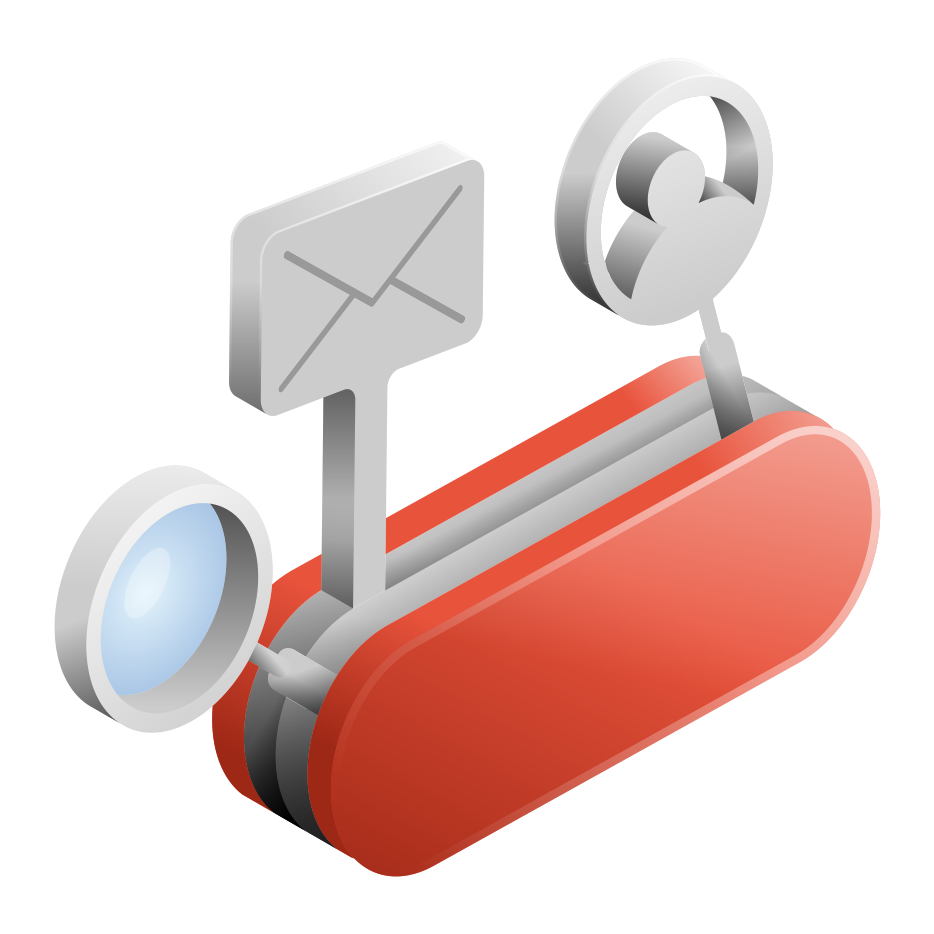Want your sales to skyrocket?
You’ll need a strategy. And for the sales success, nothing works better than a strategic sales plan. The key concern, of course, is how to design a plan that impacts sales.
We’ve collected the necessary steps, from identifying ICPs to looking up prospects’ emails, as well as sales plan examples so that you can promptly create a document that’s right for your organization.
Outline:
What is a sales plan?
Let’s deal with the definition and sales plan elements first.
A sales plan is a strategy document that lays out a company’s plan for improving sales results over a particular period.
Its components may differ. But they all focus on the business’ growth: profit plans, sales strategies, analytics, target market, existing sales force potentials, and much more. +
To make things easier, we narrowed them down to 9 main elements that lead to smooth selling. But feel free to use as many of them as you like.
1. Revenue targets and business goals
Without goals, you won’t know if your sales strategy was successful, right? This is the part where you can set a specific number to shoot for or create multiple goals for your sales team.
If you are in doubt about what to include, here are some examples to spark a thought:
- Specific sales numbers;
- Number of new clients you want to convert;
- Number of existing customers you plan to nurture and retain;
- Sales goals around a new product or service you are offering.
 2. Review of goals, tactics, and performance from a prior period
2. Review of goals, tactics, and performance from a prior period
If you write an annual sales plan, you can briefly recap the previous year, its goals, scope of work, and results. Identify the mistakes and actions that led to positive results and draw a lesson from them.
3. Your ideal customer profile and their user journey
Ask yourself a question: who do you want to attract and convert? Demographics, purchasing habits, and other factors will help you create your buyer persona.
But you shouldn’t stop here. It’s useful to outline the customer journey of your clients and suggest ways to improve their experience at every step of the sales funnel.
4. Customer segmentation and tactics to work with each segment
In this section, you can describe all segments of the leads you get from your email address search and ways to communicate with them to boost profit generation. If new segments might appear in the future, describe them as well.
 5. Market conditions
5. Market conditions
Research market trends that can strongly affect your sales and suggest ways to use them to boost your performance.
6. Budget
Without a budget set in place, you risk spending more resources than you intended to. Think of the team size and operational tools you need to process and close the deals.
7. Strategies and tactics
Suggest the best approaches for your company and describe their implementation.
8. Action plan for individuals and teams
Here, you can determine the roles and responsibilities of specific staff members, assign tasks, and set deadlines for them.
9. Performance criteria and analytics benchmarks
Describe the tracked metrics and systems that help monitor them.
Advantages of a sales plan
You might now think, “That’s too many components to describe, do I need a sales plan at all?” Yes, you do. Let us explain why.
Of course, a sales plan promotes self-discipline and diligence, but it also ensures that your sales don’t dry up over time. Which means it’s not optional.
We all tend to talk a lot, but without a plan, your goals might never turn into reality. So, the first advantage of a sales plan is that it helps you realize all of your greatest ideas.
Besides, with it, you can determine the demand for your solution and identify new product areas to predict the growth of your business. It’s also a great tool in analyzing your rivals and competitive advantage to distinctly position your company in the market and specify your product niche.
Without the sales plan, it would be hard to choose strategies and metrics for your sales team. And, as a result, it would be more difficult to measure your progress, optimize your performance over time, and motivate stakeholders.
Here are all the benefits summarized:

8 strategic steps to create an efficient sales plan
If you only start in sales and have neither sales planning experience, nor previous statistics, the following extensive guide will help you organize your work at every step, be it a small startup or a big corporation.
Each aspect of the sales plan moves gradually into the next, beginning with the team’s high-level objectives, then considering market conditions, checking your existing audience, and discovering more leads to help you meet your sales demands.

1. Set sales goals and metrics
Your sales plan structure needs an end goal. Identify what you can yield based on the size of the market, skills, and tools available to your sales team.
The biggest mistake you can make here is to set unrealistic goals. Yes, we know, you might be over-optimistic. But if you assume, for example, that the market’s going to go down and you’re going to lose a certain share, it won’t make any sense to forecast an increase in sales, right?
Another piece of advice is to ask your sales team what they think your goals should be. These people closely work with your clients and have the best understanding of them. Ask their opinion, give them enough time to think it over, and then discuss it together. Or, you can get a more experienced person to analyze the plan and help set metrics before approving it.
Remember, your goals must be SMART!

What metrics should you track while analyzing the success of your sales department? There are plenty of them to monitor:
- Sales growth
- Sales target
- Current opportunities
- Product performance
- Sales to date
- Quote-to-close
- Lead conversion rate
- Sell-through rate
It would be great for a team to have all the metrics displayed on one clear, intuitive dashboard. You can include screenshots of such dashboards in your sales plan for a more effective demonstration. For this task, such free tools as PowerPoint, Google Sheets, or Excel can be of great help. Or you can use any other software, as in the example:

“But what if it turns out I was wrong in some of my assumptions around the sales plan objectives?”
Don’t worry. If you’re developing a template for the first time, this is perfectly normal. But what’s essential is that you’ll be able to learn what needs to be improved when it’s time for the next version of your sales plan.
2. Set deadlines and milestones
It will take a while to achieve your goals, so why not split them into smaller sized milestones with deadlines to track the progress? These targets are extremely convenient in checking if your sales plan is on the right track.
Use last year’s statistics. Observe how sales earnings improved and compare your company to the market criteria. Again, talk to your sales team about their work, how they generate leads, and how they convert them into clients. What is the current conversion rate? How many deals do they expect to close in the future? This will show you what objectives to set.
Your milestones need to be precise with definite deadlines. For instance, you might want to increase your client base by 25% or boost your revenue by 40% for a specified product by the end of Q3. No matter what the milestone is, set clear objectives and a tough deadline.
This is not it. It’s better to also set personalized milestones for your sales professionals, considering differences among your employees.
For example, if somebody on your team is sending a lot of emails but not getting deals, give them the task of increasing the number of their closed deals. If someone’s awesome at closing deals but doesn’t do much outreach, give them the task of generating at least 20 new leads a month.

Oh, and set the budget as well! It usually includes:
- Sales training
- Salary and commission
- Tools, software, and resources
- Travel costs
- Food, etc.
3. Study market
You now know what you want. It’s high time to define the market niche you’re in so that you can accurately position your business to achieve the best results.
What’s a market niche? It’s what your company specializes in and also the place your business occupies, not only with your solution but also with generated content, corporate culture, and branding. It’s the way your audience identifies with you and recognizes you among competitors.
To analyze your niche, answer the following questions:
- How big is your potential market?
- Is there an inherent demand for your product?
- What’s your market situation today? (SWOT analysis will be awesome here)
- Who are your competitors? (Again, SWOT analysis)

The key here is to find what your competitive benefit is:
- Why do clients decide to purchase from you?
- Why do customers buy from your rivals and never from you?
- How come some prospective leads do not purchase at all?
- What must you do to achieve success with time?
Keep in mind that clients purchase advantages, not characteristics. Whenever explaining your value proposition, it’s an easy task to get trapped in talking about your business too much. Put the script aside and mention exactly what your solution does for clients.
A good competitive advantage:
- Shows the competitive power of the organization
- Is ideally, although not always, unique
- Is obvious and simple
- May change over time
Your competitive advantage isn’t just a fundamental component of your sales strategy, it will determine everything your organization does, from advertising to product enhancement.
4. Build an ideal customer profile
Before you get inside your potential clients’ heads, you need to define who your target market is. Ask yourself questions:
- What do your best customers look like?
- What’s their personality like?
- What are their age, level of income, and living situation?
- What does their career journey look like?
- What industry do they belong to?
- Do they have the same pain points?
- What are these challenges preventing them from achieving?
- What influences their decision-making?
- What content and information is most useful when communicating convincingly with them?
- What sorts of social networking platforms do they normally use?
5. Determine what systems, tools, CRMs to use
It will be hard to do everything without the right resources for the job. And that’s where CRM software and sales automation tools come in handy.
CRM is a technology for managing all business relationships and interactions with existing and potential customers within a company. It helps gather information on how many emails your team is sending, how much time they’re spending on qualifying leads, and how much revenue they are bringing in.
Meanwhile, with sales automation software, you will be able to standardize and automate the entire sales process. There are lots of professional tools for sales teams, these are just some of the examples:
- Snov.io,
- Salesforce,
- Freshsales,
- HubSpot,
- Insightly,
- Pipedrive,
- Microsoft Dynamics 365,
- Zoho CRM.
For example, a tool like Snov.io helps you fill your marketing funnel with quality targeted leads and close them easier. You can focus on every stage of the sales funnel and business growth: market research, email verification, lead generation, analysis, and business forecasting for scaling and future growth.
6. Support existing customers
Don’t underestimate your current dedicated customers. References, word-of-mouth, client feedback, and existing connections are your best sources that ensure additional growth.
Check if anybody you know on social media can recommend you to one of your desired prospects. Contact loyal clients and offer them a discount or a referral bonus if they know someone who would profit from your products or services.
7. Find partners for strategic cooperation
Many entrepreneurs, startups, and big organizations might target the same types of customers. But oftentimes, they are not your competitors but rather offer services that can complement your solution (this is why they can be called CSPs or Complementary Service Providers).
You can engage with them in different ways:
- Writing for their website or blog;
- Delivering speeches at webinars or offline seminars;
- Offering valuable resources for their platforms;
- Creating a mastermind group where you can exchange contacts.
The more value you provide to your business partners and target audiences, the more connections you will have. All these services are provided for free and included as an additional investment in your sales strategy plan.
8. Keep studying your statistics, analyze, and modify your approaches
Don’t forget that your sales plan is a flexible document and needs to be regularly updated according to new market trends, outreach campaigns, features, or even staff members. Return to the document from time to time to see if your prognosis is close to reality.
Organize regular meetings to discuss progress, discover and solve problems, align the work across teams, get experience from your failures and success, and enhance your plan accordingly.
Strategic sales plan templates
If you want to find more inspiration, check out these simple yet helpful sales plan template examples.
- HubSpot Sales Plan Template
- Sales Plan by Asana
- BestTemplates Sample Sales Plan
- Venngage Online Sales Plan Maker Map
- BestTemplates Simple Plan
- Creately Sales Strategy Plan
- FitSmallBusiness Sales Plan
- BestTemplates Sales Action Plan
- TemplateLab Sales Plan Template in Microsoft Word

What sales plan to choose?
There might be one more question unanswered – what template to choose? It all depends on your particular business goals:
- The most common one is the 30-60-90 day sales plan with milestones that need to be achieved by each period.
- A weekly or yearly sales plan is also an option.
- You can create a sales plan for specific sales tactics, such as email drip campaigns, prescribed calls, and appointments. It sort of resembles a yearly/weekly sales plan, but it focuses on assessing and increasing gains for a single objective or task.
- In the meantime, sales professionals who manage a specific market region typically use region sales plans to present CMOs and VPs with more clarity of their sales initiatives.
Wrapping up
In many product sales circumstances, the greatest challenge is passiveness. However, with a great, step-by-step product sales plan and a passionate team with distinct milestones in mind, you’ll have everything you need to endure any resistance and carry on hitting your targets!




